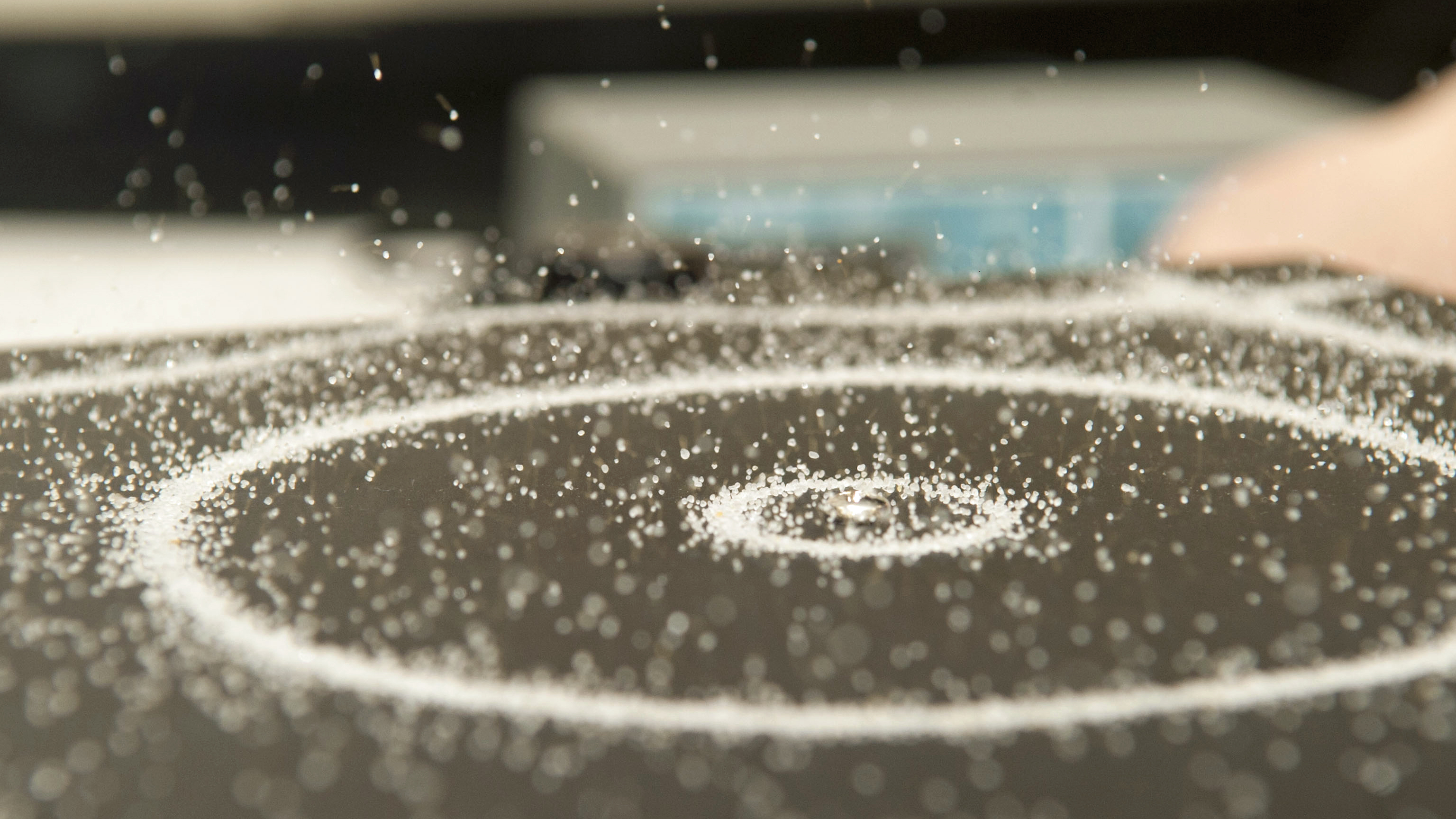
“Dancing” sand demonstrates sound waves in action. (photo by Bill Roa)

Susannah Lamont gives a demonstration at Atlanta Science Festival at GPC. (photo by Bill Roa)
‘Science of Music’ shown in creative ways at science festival
Sand on a metal plate jumps and wiggles, spreading into intricate patterns. It’s slightly eerie because nothing seems to be touching the plate or causing the sand to move into new designs.
Sound waves that are invisible to the eye are influencing the sand’s movement, says Georgia Perimeter College physics professor Susannah Lomant. She turns up the wave driver of a nearby frequency generator, and the sand crystals change their design again as the pitch goes higher and higher.
“The plate itself is vibrating due to the frequency of the function generator and when you get to just the right frequency, you will find the sound ‘settles’ into some places and jumps away from the regions that are still oscillating,” explains Lomant. “These patterns can also be found in many musical instruments such as drums and violins.”
Called Chladni Plates, the phenomenon was demonstrated March 26, at a program on GPC’s Decatur Campus. The demonstration was part of the college’s participation in the Atlanta Science Festival March 22-29.
At the same session, Lomant showed participants how to build and play music on a light Theremin.
"Have your ever heard the music from 'The Day the Earth Stood Still?" asks Lomant. "That eerie music is produced from a theremin, which uses two antennas and electromagnetic fields to make sound. A light theremin is similar but uses light and photoresistors instead of antennas to produce that uniquely spooky sound."
Lomant is just one of almost two dozen Georgia Perimeter College science and music faculty who collaborated to present “The Science of Music,” a series of hands-on experiments, films and informational lectures that explore how science and music are related.
Other GPC presentations included:
Decatur Campus: Christopher Okafor, “Drum Lines and Sound Waves”; Dr. Brandi Childress, Dr. Robin Socci and Alexis Nduwimana, “Seniors and Music Therapy”; Derwin Daniels, Rick Barnes, John Beatty, Carlos Carter and Johnny Tooson, “The Physics, Biology and Chemistry of Woodwinds in a Jazz Ensemble.”
Clarkston Campus: Dr. James Guinn, Physics, “The Vibrations of Strings”; Martin Okafor and Mindy Maris, “The Physics of Sound”; Mark Graves, “ How Science and Music Connect”; Dr. Vivian Mateo, “The Music of Chemical Reactions”; Steve Fitzpatrick, “Earth Rocks: Music of the Sphere”; Pablo Pedros, “Dances with Non-Newtonian Fluids,” and Dr. Manuela Trani and Fred Buls, “Yoga and Meditation: The Power of Biomusicology.”
Dunwoody Campus: Jay Dunn and Megan Levacy, “Symphony of the Stars,” and Claire Paul, “Dance of the Planets.”
Alpharetta Campus: Dr. Laura Whitlock, “The Science of Music—Let’s Make Waves.” Whitlock also presented science workshops at Sweetwater Middle School in Gwinnett County and Dickerson Middle School in Cobb County.
Dr. Pamela Leggett-Robison organized the college’s participation in the festival.
